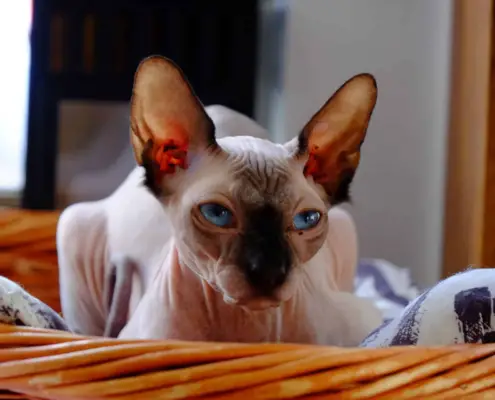
Cats are known for their mysterious and quirky behavior, and one such behavior that often perplexes cat owners is their tendency to rub their faces on various objects. From furniture to walls, cats seem to have an inexplicable desire to mark their territory with their scent. But what exactly drives this behavior? In this article, we will delve into the science behind why cats rub their faces on things.
The anatomy behind cats’ behavior
To understand why cats engage in face rubbing, it is important to explore their unique anatomy. Cats possess scent glands located in various parts of their bodies, including their faces. These glands secrete pheromones, chemical substances that play a crucial role in feline communication. When a cat rubs its face on an object, it is essentially leaving behind its scent through these pheromones.
Scent marking: The primary purpose of face rubbing
The primary purpose of cats rubbing their faces on objects is scent marking. By leaving their scent behind, cats are effectively claiming ownership of the object they are rubbing against. This behavior serves as a form of communication, both with other cats and with their human companions. It signals to other cats that the object has already been claimed, reducing the likelihood of territorial disputes.
Communication and social bonding through facial rubbing
In addition to marking their territory, cats also use facial rubbing as a means of communication and social bonding. When a cat rubs its face against a human or another cat, it is not only leaving its scent behind but also engaging in a form of non-verbal communication. This behavior is often seen as a friendly gesture, a way for cats to establish and maintain social bonds with their companions.
The role of pheromones in cats’ face rubbing behavior
Pheromones play a significant role in cats’ face rubbing behavior. These chemical signals are unique to each cat and contain information about the cat’s identity, reproductive status, and emotional state. By rubbing their faces on objects, cats are effectively depositing these pheromones, which can be detected by other cats through their own highly developed sense of smell. This form of communication allows cats to convey information and establish social hierarchies within their community.
Exploring territorial and familiar scents through face rubbing
Cats’ face rubbing behavior is not limited to marking territory and social bonding. It also serves as a means for cats to explore and familiarize themselves with their environment. When a cat rubs its face against an object, it not only leaves its own scent but also picks up the scents present on the object. This allows cats to gather information about their surroundings, including the presence of other animals or potential threats. By rubbing their faces on objects, cats create a familiar scent landscape that provides them with a sense of security and belonging.
The connection between face rubbing and emotional well-being in cats
Face rubbing is not just a physical behavior; it is also closely tied to a cat’s emotional well-being. When a cat engages in face rubbing, it releases endorphins, which are neurotransmitters that promote feelings of pleasure and reduce stress. This behavior serves as a form of self-soothing for cats, helping them to alleviate anxiety and create a sense of comfort in their environment. Understanding the emotional significance of face rubbing can help cat owners create a supportive and enriching environment for their feline companions.
Common objects cats prefer to rub their faces on
While cats can essentially rub their faces on any object, there are certain items that they are more inclined to target. These objects often have specific characteristics that appeal to cats’ natural instincts. For example, cats are known to enjoy rubbing their faces on rough surfaces, such as tree bark or scratching posts, as it helps them to remove dead skin cells and maintain the health of their facial fur. Additionally, cats may show a preference for objects that contain the scent of their owners, such as clothing or bedding, as it provides them with a sense of comfort and familiarity.
Understanding the difference between face rubbing and head bunting
It is important to differentiate between face rubbing and head bunting, as these behaviors may appear similar but serve different purposes. Face rubbing involves a cat rubbing its face against an object, while head bunting involves a cat gently bumping its head against another cat or human. While both behaviors involve scent marking and communication, head bunting is typically reserved for close social bonds and signifies a higher level of trust and affection.
Appreciating the unique behavior of cats
The behavior of cats rubbing their faces on things may seem peculiar to us, but it is an integral part of their natural instincts and communication methods. By understanding the science behind this behavior, we can appreciate the unique ways in which cats mark their territory, communicate with others, and establish emotional well-being. So the next time your furry friend rubs their face on your leg or a piece of furniture, remember that it is their way of leaving their mark and expressing their connection to you and their environment.
If you enjoyed my article, I would appreciate you sharing it with your network.

Sima Ndlebe
Sima writes for CatBuzz. He is interested in Cats, Health and Fitness, and Entrepreneurship.
Published: 6 December 2023



